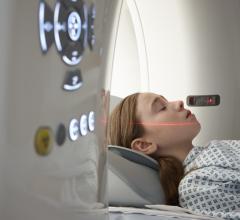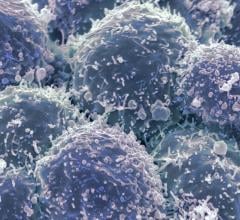
May 5, 2016 — The National Basketball Association (NBA) and GE Healthcare announced the first round of winning research proposals submitted to their Sports Medicine and Orthopedics Collaboration. Launched in the summer of 2015, this strategic collaboration is funding research to address the prevention, diagnosis and treatment of musculoskeletal injuries affecting NBA players and everyday athletes.
The collaboration is directed by a Strategic Advisory Board led by John DiFiori, M.D., the NBA’s director of sports medicine, and an NBA/GE Healthcare steering committee.
This first round of research proposals focused on the natural history, diagnosis, treatment and prevention of tendinopathy. “Tendinopathy — and specifically that involving the patellar tendon — is a common issue among basketball players at all levels,” said DiFiori, who also served as co-chair for this call for proposals. “The NBA is pleased to work with GE Healthcare to fund additional research in this area to increase our understanding of this condition as we seek to improve health outcomes and limit the impact on athletic performance for NBA players and the general population.”
Using a competitive application process with a rigorous scientific review, six winning proposals were selected from a group of nearly 70. The following awardees include research teams from leading academic and healthcare institutions across three continents:
- La Trobe University, Melbourne, Australia (Jill Cook, Ph.D.) – Patellar Tendon Pathology, Its Development and Relationship with Pain in Elite Athletes. Investigators from La Trobe University and the University of Newcastle in Australia, as well as Tulane University and the University of North Carolina-Chapel Hill in the United States, propose a novel imaging method to investigate the relationship between pain and change in tendon structure — in both adult and adolescent athletes. This study will also evaluate how certain exercises can immediately impact pain, help avoid missed games and make athletes’ tendons stronger;
- University of Calgary (W. Brent Edwards, Ph.D.) – Towards the Real-time Monitoring of Tendon Strain and Cumulative Damage to Minimize the Risk of Patellar Tendinopathy. Using advanced imaging techniques and biomechanical measurements to quantify tendon properties, researchers from the University of Calgary, in collaboration with Adidas and Robbins Inc., will assess the influence of playing surfaces and footwear on the risk of patellar tendinopathy and develop a wearable technology to monitor tendon loading during play;
- University of Calgary (Carolyn Emery, Ph.D.) – Prevention of Patellar and Achilles Tendinopathies in Youth Basketball. Emery and her team of experts aim to identify risk factors for patella and other tendon-related injuries in young players, explore self-monitoring and reporting programs, and assess the impact of a basketball-specific neuromuscular training program, all of which could have a long-term impact on young athletes and help them avoid premature exit from sport participation;
- University of Wisconsin-Madison (Kenneth Lee, M.D.) – Platelet-Rich Plasma Therapy for Patellar Tendinopathy: A Randomized Controlled Trial Correlating Clinical, Biomechanical and Novel Imaging Biomarkers. Lee and his team of researchers aim to work with college basketball players to evaluate the effectiveness of a non-surgical intervention for treating patellar tendinopathy (also known as “jumper’s knee”) by comparing the use of concentrated platelets containing healing growth factors in a controlled study. They will also track the healing changes of the patellar tendon using new magnetic resonance imaging (MRI) and ultrasound imaging techniques;
- Hospital for Special Surgery, New York, N.Y. (O. Kenechi Nwawka, M.D.) – Prospective Longitudinal Assessment of Patellar Tendinopathy in Elite Basketball Players Using Quantitative Imaging with Correlation to Symptoms and Functional Analysis. Leveraging advanced medical imaging technology including ultrasound and MRI, researchers at Hospital for Special Surgery aim to characterize the changes in the patellar tendon over the course of a basketball season, thus providing predictive information to identify players at an increased risk of developing tendinopathy; and
- Erasmus University Medical Center, Rotterdam (Edwin H.G. Oei, M.D., Ph.D.) – Progressive Tendon-loading Exercise Therapy for Patellar Tendinopathy in Jumping Athletes: A Randomized Controlled Clinical Trial Evaluated with Advanced 3D Ultrashort Echo Time MRI. Researchers from Erasmus MC in Rotterdam, the Netherlands, with support from the Netherlands Basketball Federation, will use a novel MRI technique called ‘ultrashort echo time MRI’ to evaluate a new graduated, non-invasive exercise therapy for “jumper’s knee” that requires no specific equipment. Such an approach could result in increased tendon and muscle strength and pain relief.
“NBA players are among the best in the world, and the NBA is committed to their health and well-being, which is why we’re excited to team up with GE Healthcare and leading researchers for the benefit of the players and our game,” said David Weiss, NBA Vice President and Assistant General Counsel. “The projects we’re announcing today include important areas of focus for the NBA including injury prevention and youth health, as well as advanced technologies and methods such as new approaches to imaging, wearable technology and biomechanics.”
Beyond the upcoming myotendinous injury call for proposals, future calls from the NBA/GE Healthcare Collaboration may address bone stress injuries, articular cartilage injury, and other important musculoskeletal issues affecting NBA players.
For more information: www.gehealthcare.com


 July 25, 2024
July 25, 2024 








